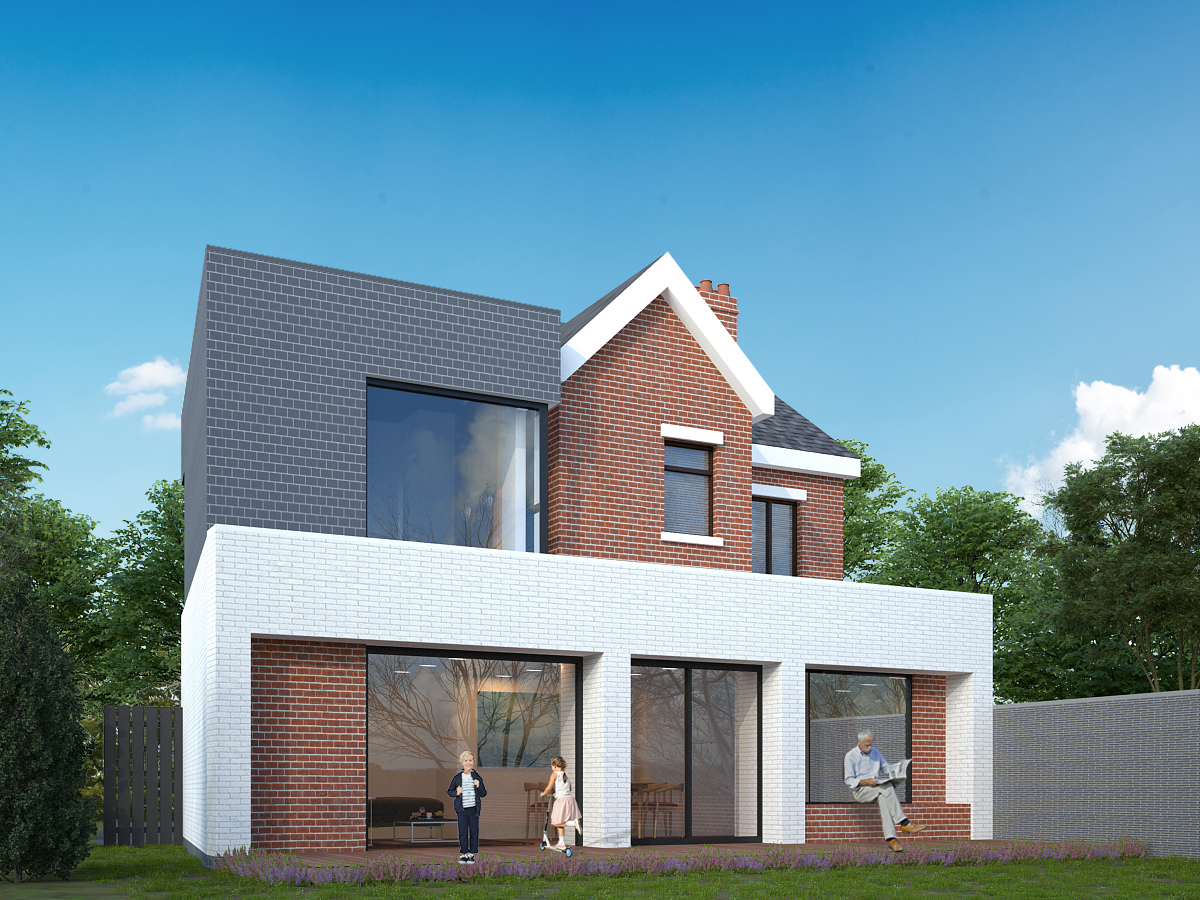STUDIO PARK
Lisa Park is an architect and a teacher at Ulster University, she started her practice Studio Park in 2016 when she moved back to Belfast after living abroad for many years. She’s interested in the ethics and the impact of architecture as well as architecture within the community.
We spoke to Lisa about how she started her practice and any advice she had for others looking to do the same.
Tell us a bit about yourself
I’m an architect and I have my own practice called StudioPARK. I also teach at Ulster University part-time. I am mother to two young children, aged one and three and wife to Ronan who is also an architect. I grew up in County Tyrone and spent a lot of time outdoors, surrounded by nature. My father was a builder, he now teaches bricklaying and stonework. This early exposure to the construction industry, combined with my love of art, lead me to an early interest in architecture and design.
The key focus of my practice is on creating good design and working closely with our clients and all those involved with the projects to get the best possible outcome. I am interested in the ethics of architecture and the social responsibility that architects have as designers of the spaces people inhabit. Some of my work in the past has revolved around regeneration of communities. I completed a research masters focusing on the growth of cities, dis-placement of communities and the reuse of empty spaces within cities as urban gardens, play spaces, community facilities and also the role of art in public space.
I have worked in a variety of practices, large and small, in the UK, Ireland, Poland and Australia, including 6 years at PTW Architects in Sydney as an Associate. This diversity of experience has given me opportunity to work on a range of projects, including heritage and conservation projects, infrastructure, cultural buildings, one-off houses and bespoke commercial and residential interiors. I have taught architecture and design in Belfast, Seville, Sydney and Tasmania.
I am also interested in the impact that the construction industry is having on the environment and as a practice, we are conscious of this in our work. In research by the US Green Building Council (USGBC), the construction industry accounts for 40 per cent of worldwide energy usage so it is something that cannot be ignored. Architecture that is inspired by, or has a connection to, nature and the use of natural materials, is something we are focusing more on as a practice.
I believe in the importance of beauty in architecture. Architecture has the ability to bring people together, to uplift, to improve health and to create connection.
How did you start Studio Park?
While working in Australia, I did a business course part-time. Business isn’t generally taught to architecture students at university and being a good architect doesn’t necessarily equate to being a good business person. I always had an interest in business and loved the idea of starting a practice, although I was aware that would bring its own challenges.
We moved back to Belfast in 2016 and I decided to start the business shortly after the birth of my second child last year in 2017. I had been working on very large-scale projects in the previous years and wanted a shift back to smaller scale projects. I also wanted to teach alongside working in practice as well as have some flexibility in my working hours with two small children at home.
I spoke to a few people I knew who had their own architecture practice and gathered as much advice as possible from those who had been through the process of setting up their own business previously. I had a project to get started on but obviously needed to get more work lined up, so it was important to spread the word as quickly as possible. The first few months were a big learning curve.
Who are some of your design heroes?
I tend to gather images that I find interesting or inspiring from a wide variety of architects and designers. Some imagery I collect may not even be of buildings but of forms in nature or products, textiles or paintings. Inspiration can come from anywhere.
I admire Alison Brooks. Her practice is based in London and she has become one of the most influential architects coming out of the UK on to the international stage in recent years. Her practice designs award winning buildings emerging from cultural research and considering place, community and landscape. I recently visited her installation at the Architecture Bienniale in Venice and found it to be beautiful, clever and playful. These are themes that run through a lot of her work.
Andrew Maynard is founder of Austin Maynard Architects, based in Melbourne, Australia. His work is often experimental and explores beyond the boundaries of the typical architecture project. He is also a founding director and board member of Nightingale Housing, a social enterprise that exists to support, promote and advocate for high-quality housing that is ecologically, socially, financially sustainable.
Yvonne Farrell and Shelley McNamara of Grafton Architects have led the way for female architects in Ireland since they established Grafton Architects in 1978. Their international success in practice and academia is incredible.
Bjarke Ingles of BIG Architects designs very unconventional buildings with a focus on sustainability and sociological concepts. His designs provide simple, interesting and artistic solutions to very complex projects. BIG communicate design ideas in a clear and appealing way.
Sir Patrick Geddes is known as the Father of Town Planning and was at the peak of his career in the early 20th Century. He was originally a botanist and his work as a planner of towns and cities was greatly influenced by the natural world around us. He worked to improve deprived areas of cities and studied closely the climate, occupations and pastimes of the residents which further influenced his work. I explored his work further while completing my research Masters.
Do you have any advice for anyone who would like to set up their own architectural practice?
Be prepared to admit that you don’t know something. Be ready to ask lots of questions and listen to lots of advice. Take it all in and assess what will work best for you. Build up a network of your peers and support each other. Speak to business owners who aren’t architects as they may have a different viewpoint.
Ideally start some projects while you’re still in employment elsewhere. This can be a challenge or impossible if you have children or other commitments. In that case it is good to have a steady, secondary source of income while you are establishing the business.
Don’t sell yourself short. Architectural fees can be very competitive, and it can be tempting to charge very low fees when you’re starting out but remember your worth and charge realistically. You can’t do your best work if you’re burnt out working for next to nothing.
Take the business as seriously as you take your architecture. Take the time to set things up properly. Track, monitor and assess. Don’t be afraid to try things and change it if it’s not working. There’s a lot of trial and error at the start. Keep learning.
Remember why you are doing what you do. Keep images of things that inspire you close at hand to keep you motivated and focused on producing your best work. And remember, in the words of Nelson Mandela, “It always seems impossible until it’s done”.
https://www.studioparkarchitects.com/

